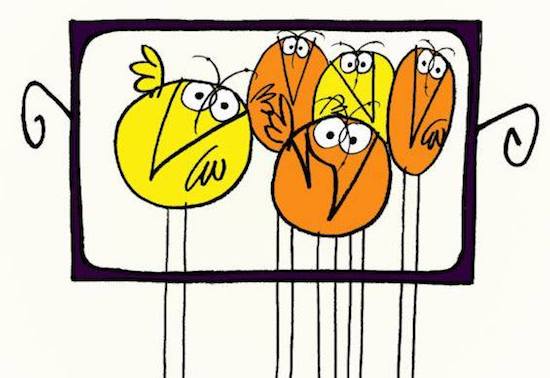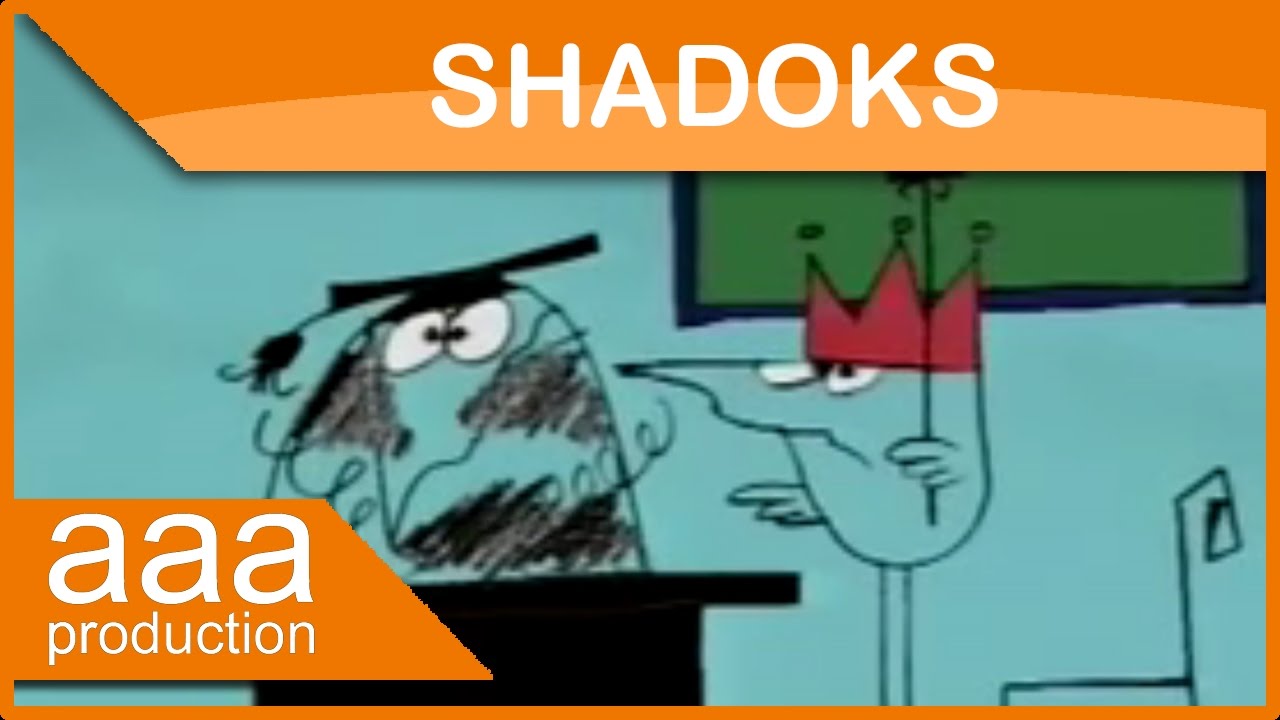Something strange appeared in the skies over Annecy on Valentine’s Day, 1973. “My wife was preparing lunch in the kitchen when she saw through the window, in the direction of the Parmelan mountain, a bright red-orange ball of intense light, like a very bright street lamp,” claims the man interviewed by a magazine called Lumieres dans la nuit date 2 November of that year. “Intrigued, she approached the window and perceived, at that moment, three small balls beneath the object. She ran towards the bedroom window to gain a clearer view, but all had disappeared…”
Forty-five years later, something perhaps even stranger has made an appearance high over the French city in the Auvergne-Rhône-Alpes. Strange bird-like creatures from the Planet Shadok with their own monosyllabic language, offbeat humour, and inscrutable logic. “If there’s no solution, it’s because there is no problem,” they insist, and “Why do it the easy way when you can do it the hard way?” Welcome to the strange world of the Shadoks. It is a very, very, very long time ago…
The Shadoks were the creation of Cherbourg-born animator Jacques Rouxel, making their debut on French TV on the 29 April 1968 – mere days before student protestors at Nanterre, the Sorbonne, and elsewhere erupted into riots on the streets of Paris. From the beginning they reflected – arguably even amplified – their times: emphasising the absurdity of labour, a playful anarchy, even – in one episode – going on strike. Other episodes dealt, in uniquely Shadok-y fashion, with the Pill and the moon landings. But for the Shadoks, since “the more one fails, the greater the chance that it will work”, it was necessary to deliberately fail to reach the moon 999,999 times, since only that way could they guarantee success on the millionth attempt.
An exhibition currently on display at the Château d’Annecy explores the life and times of The Shadoks, their creator, and their era, wonderfully bringing out the the wild humour, surreal imagery, and manic leaps of logic and sense. To this day, The Shadoks are especially remembered in France for mottos, like “When you don’t know where you’re going, you have to get there as fast as you can”, which Rouxel ascribes in part to his brother in the navy, who was wont to flights such as “There’s a principle in the navy: salute anything that moves and paint the rest.” But it’s clear that as great an influence is attributable to modernist literature. Wall texts in the galleries discern several references in the series to the play Ubu Roi by Alfred Jarry, and cite Rouxel’s professed love for the Oulipian literary games of Raymond Queneau.

The exhibition also brilliantly draws out Les Shadoks relation to currents in modern art, from Pop to Colourfield, Lyrical Abstraction, and more. Several original animation cells on the walls bring out the vivid abstraction of some Shadoks frames and as the wall texts suggest, there is an undeniable influence of works by Joan Miró and Paul Klee – especially the spindly creatures of the latter’s Twittering Machine of 1922.
But for Rouxel, just as important an influence came from American cartoonist Saul Steinberg, a name he appends to those former two without a blink – Klee, Miró, Steinberg… – as if a natural continuation of the same series. Romanian-born Steinberg created 85 covers and 642 internal illustrations for The New Yorker between 1941, the year he fled Europe for the American continent, and his death in 1999. For Rouxel, he was “the master of us all.”
Perhaps most surprising of all is the Shadoks relation to the history of electronic music. The programme’s producer, after all, was none other than Pierre Schaeffer, inventor of musique concrète.
Since 1964, the founder of the Groupe Recherches Musicales had been put in control of the whole Service de la recherche de la RTF, the experimental wing of the state broadcaster, comprising wings charged with research in areas including not just music, but also technology, critical studies, and the image. It was here, at the Groupe de Recherche Image, that Rouxel himself came to work as a researcher, some years shortly before creating Les Shadoks.
The series also made use of a unique contribution from the Groupe de Recherche Technique – the Animographe, created by Jean Dejoux in 1961, a device for simplifying and speeding up the process of creating animated films using 70mm bands of perforated transparent film.
The music for the show was composed and created by another ORTF researcher: Robert Cohen-Solal, from the Groupe de Recherches Musicales. Born in Algiers in 1943, Cohen-Solal began playing violin at the age of 8 and moved with his family to Nimes in France at 13. After graduating from the Sorbonne in the early 60s, he joined the GRM as an intern and worked as assistant to Bernard Parmegiani. Of his role as composer to Les Shadoks, he has said, “As everyone else was busy and I was the only one available, I took the job.” But in fact Cohen-Solal’s work on the series is unique and quite brilliant, an effortlessly enchanting mix of pop and avant-garde electronics that managed to conjure an entire world out of bloops and gurgles, shimmers and swirls. The Dangerous Minds blog described the sound as “a meeting of the minds between Carl Stalling and Einstürzende Neubauten … Like if La Monte Young made a cover version of ‘Popcorn’.”
In two episodes from the show’s second series in 1970, Cohen-Solal’s role really came to the fore, when the programme looked to the music – and often outlandish musical instruments – on planet Shadok. These bizarre chimeras, seemingly created by a process of surrealist corps exquis, are constructed of a mix of recognisable parts from western instruments – a trumpet horn, a piano keyboard – apparently torn to shreds and reassembled by MC Escher. The sounds were equally bewildering. But in some ways the musical philosophy of the Shadoks is not so far away from the avant-garde composers of their day. “To a well-trained ear, there’s no noise that can’t be heard as music, and vice versa” sounds suspiciously like something from a speech by John Cage. Shadok music, we are told by another wall text, even featured an “inaudible note” so that Shadok musicians could keep playing through a minute’s silence.
Unlike the UK’s BBC Radiophonic Workshop, though also nominally under the command of a national broadcasting institution, the GRM tended to be left to its own devices and was far more rarely tasked with providing “special sounds” for TV and radio shows. Cohen-Solal’s music for Les Shadoks represents a fascinating exception.
Shadokorama: Jacques Rouxel et les Shadoks is at le Chateau d’Annecy until 15 October



